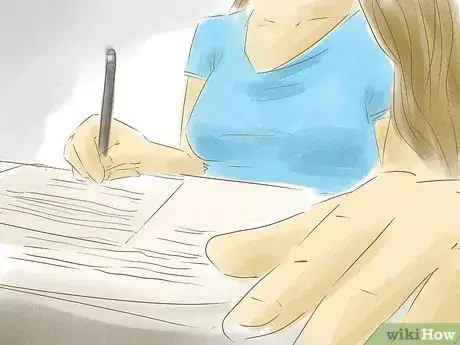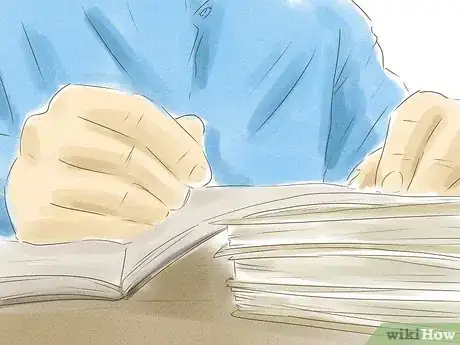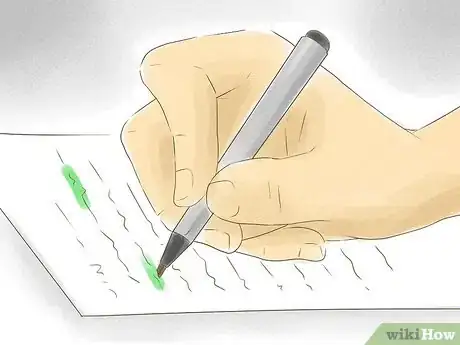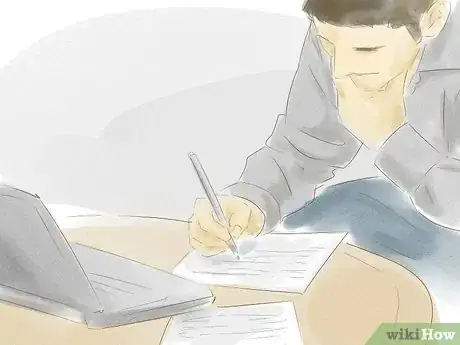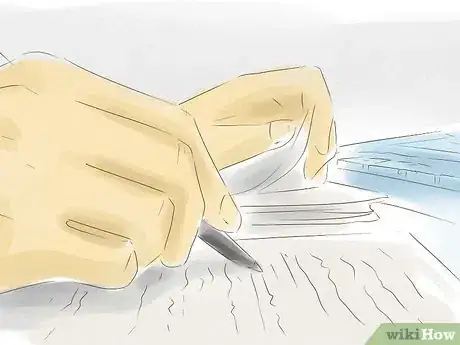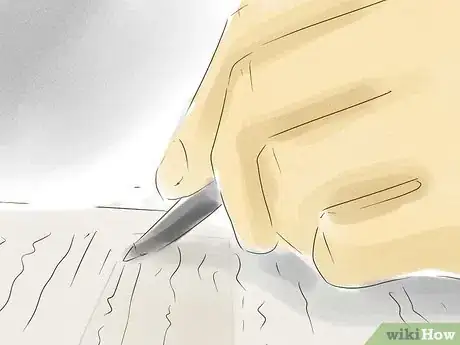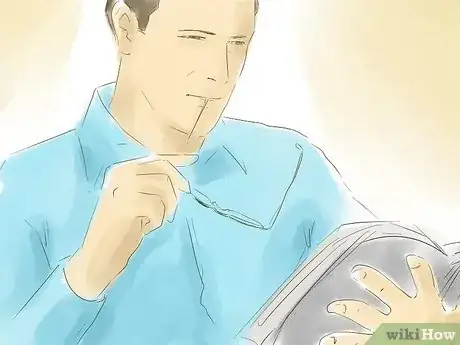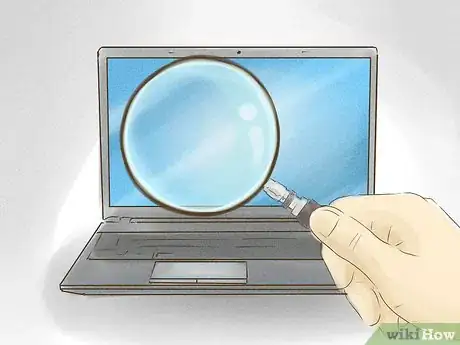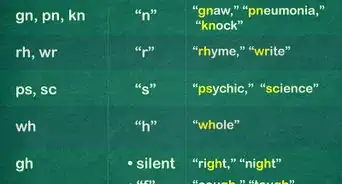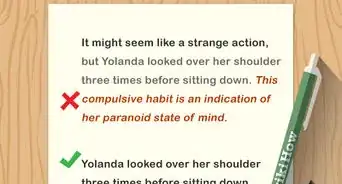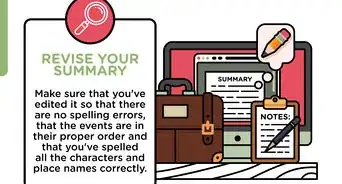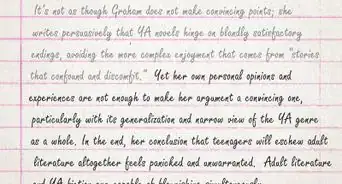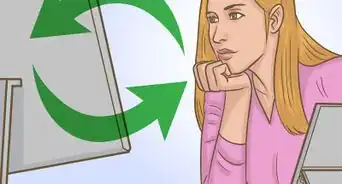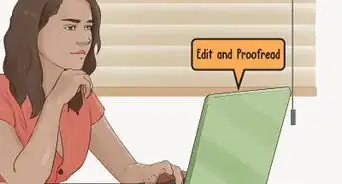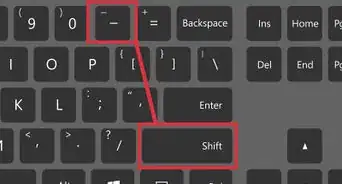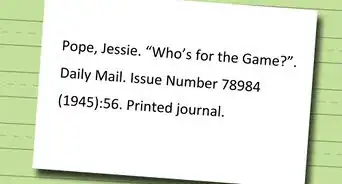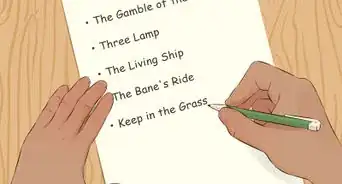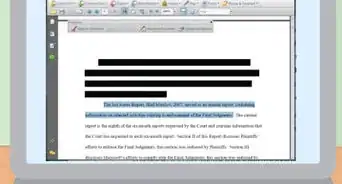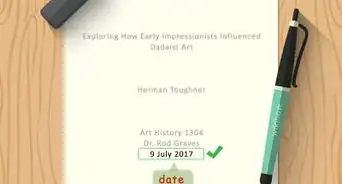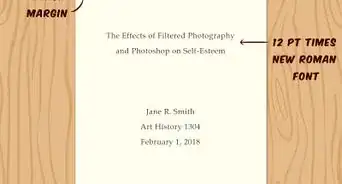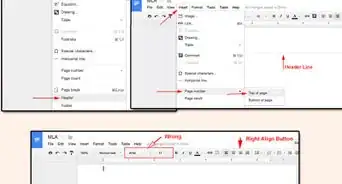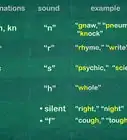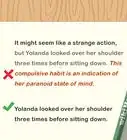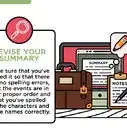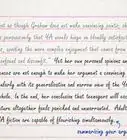This article was co-authored by Alexander Peterman, MA. Alexander Peterman is a Private Tutor in Florida. He received his MA in Education from the University of Florida in 2017.
This article has been viewed 17,815 times.
Copy editing is a valuable skill to have for anyone working in a field that involves publication, including journalism, academia, literary publishing, and technical writing. A copy edit is one of the last stages of publication, which a text should receive shortly before being published (whether online or in print). When providing a copy edit, focus on the technical aspects of language use on the page in addition to readability and accuracy.[1] Copy edits are most valuable when performed on someone else’s text, although in a pinch, you can copy edit your own text.
Steps
Becoming Familiar with Editorial Procedures
-
1Obtain necessary reference materials. The person or agency for which you’re providing a copy edit will determine which style guide you’ll refer to.[2] For example, if you’re copy editing an academic journal article for an English literature scholar, you’ll need to refer to the MLA style guide. Good resources for all copy editors to have on their reference shelf include:
- The Chicago Manual of Style
- The Associated Press style guide (especially for journalists)
- A reputable dictionary
- An in-house style guides, if your publication agency has one
-
2Use copy editing marks. When you’re editing copy on paper, there are certain editorial shorthand marks which you’ll need to know and use. These marks are nearly universal and will be recognized by other editors, making your task as a copy editor much easier. For example:
- A caret (^) is used to show where a new word or punctuation should be inserted.
- A horizontal strikethrough (―) indicates that a word should be removed.
- A slash through a capital letter (Ø) means that is should be lowercase.
- If you make an editorial revision which you wish to undo, write “STET” (Latin for ‘let it stand’) in the margin next to your incorrect revision.
Advertisement -
3Familiarize yourself with the editorial software. If you’re editing texts digitally (and not on paper), take full advantage of your software’s editorial functions. For example, if you’re providing a copy edit in Microsoft Word, you’ll need to know how to Track Changes, leave Comments, and use the Reviewing Pane.
- This familiarity will allow you to quickly provide a helpful copy edit and to take full advantage of the resources that your word processing software uses.
Beginning a Copy Edit
-
1Skim the entire copy before you begin editing. Before you start the detailed work of copy editing, familiarize yourself with the content, tone, and formatting of the entire text. This will help satisfy your curiosity as to what the text is about, and will familiarize you with the author’s writing ability and style.[3]
- Make sure that you understand the goal or objective of the piece as well.
- If you’re editing a long text (say, over 30 pages), you may need to skim a chapter or section at a time.
- If you’re copy editing your own text, you can probably skip this step.
-
2Correct spelling mistakes and word usage. Spelling errors crop up in every text, and it’s mostly up to copy editors to catch and correct them.[4] Also, correct words that, while not misspelled, are incorrectly used. For example, if an author meant to write “thorough” but instead wrote “through,” change the incorrect word.
- If you’re editing with a word processing software, it will catch many errors for you. Keep your eyes open for spelling mistakes still, though, since digital spell checkers aren’t perfect and can’t edit based on context.
-
3Correct grammar errors. As you edit the copy, make sure that it follows correct grammar rules. Correct any ambiguous or incorrect grammar. While an author may perceive these edits as superficial, correct grammar is integral to the meaning and structure of good copy.[5] If you’re unsure if a specific instance of grammar is correct or not, consult your style guide. Grammar errors that you should spot and correct include:
- Subject-verb disagreement.
- Dangling or misplaced modifiers.
- Inconsistencies in verb tense.
-
4Search for and fix any errors in punctuation. You’ll need to refer to a style guide or grammar manual, which explains correct punctuation usage and rules.[6] Edit the text so that all punctuation adds to the clarity and readability of the copy. An important part of this step is to make sure that authors use commas correctly.
- For example, an inexperienced author may place a period or comma outside of quotation marks.
- Fix any misused em- or en-dashes, or hyphens.
-
5Make sure that all abbreviations are defined. Authors who are deeply entrenched in their fields often forget that lay readers will be unfamiliar with many common abbreviations and acronyms. This is especially prevalent in scientific or technical writing. Catch these missing definitions and insert them.[7]
- Acronyms should be defined at the first usage. For example, USGS should be defined as or “the U.S. Geological Survey.”
- Units of measure should also be define. For example, if you’re editing a paper on hydrology, “ppm” should be defined as “parts per million” when first used. Common measurements like “cm” may not need to be defined. Consult your style guide to find out.
Ensuring Consistency and Structure in Copy
-
1Correct awkward or ambiguous wording. As you edit copy, you’ll find plenty of sentences that, while not technical wrong, are ambiguous or unclear. If these sentences can be easily corrected, do so. If you’re unsure of the author’s meaning, leave a note asking them to clarify.[8]
- Correcting ambiguity often includes revising passive voice when it’s ineffective or unintentionally obscures the subject who performs an action.
-
2Look for consistency between details. For an author writing a large, complex text, it’s easy for inconsistencies to intrude during the writing the process. Make sure that these details are handled consistently throughout a text. If you need to, you could even keep a running list of minor details and make sure they’re consistent throughout a work.[9] For example:
- For example, if a character’s hair or eye color changes part way through a novel, note this.
- Note if the units of measurement in a technical paper shift from inches to centimeters part way through, alert the author.
-
3Examine the logical structure of the copy. Whether you’re editing a novel or a scientific journal article, the text should progress in a logical way. Sections and ideas should build on previously demonstrated points. Edit and move portions of the text as necessary until the progression of ideas makes sense to you and will be clear to anyone who reads the copy.[10]
- For example, if an author of a science paper seems to argue for 2 different conclusions on different pages, flag this as illogical structuring.
-
4Ensure that tone and wording are appropriate for the intended audience. First of all, you should make sure you understand who the intended audience should be. Based on the publication type, you’ll need to edit the author’s language to make sure that it captures readers’ attention. Most copy should address the audience without appearing to talk over their heads or talking down to readers.[11]
- When you notice something related to tone and wording, be sure ask yourself whether it makes sense for the author's purpose and audience. For instance, if a medical article lacks medical jargon, think about whether it’s meant for doctors and researchers or for the general public before suggesting changes.
- For example, if an author has written a science text for children, it should not include too many words that kids will need to look up.
- On the other hand, if a novelist is unintentionally using a juvenile vocabulary, suggested a few more sophisticated wording choices.
-
5Check the accuracy of facts and statistics provided in the copy. If the author provides statements that claim to be factual, use resources at your disposal to confirm that these facts are accurate.[12] A great way to begin doing this is by verifying that the source of the facts or statistics is legitimate. Check the Works Cited page and refer to the sources listed there if necessary.
- You can also follow up with a secondary source if you’re unsure about the accuracy of something.
- When fact-checking online, check scholarly publications or government or educational websites. You could also use Google Scholar, but avoid resorting to sites like Wikipedia.
- Fact checking is especially important in nonfiction, technical, or scientific writing.
References
- ↑ https://nybookeditors.com/2015/01/copyediting-vs-line-editing/
- ↑ http://grammarguide.copydesk.org/2014/01/19/advice-to-an-aspiring-copy-editor/
- ↑ https://www.copyblogger.com/copy-editing-tips/
- ↑ https://nybookeditors.com/2015/01/copyediting-vs-line-editing/
- ↑ https://nybookeditors.com/2015/01/copyediting-vs-line-editing/
- ↑ https://nybookeditors.com/2015/01/copyediting-vs-line-editing/
- ↑ https://nybookeditors.com/2015/01/copyediting-vs-line-editing/
- ↑ https://nybookeditors.com/2015/01/copyediting-vs-line-editing/
- ↑ https://nybookeditors.com/2015/01/copyediting-vs-line-editing/

